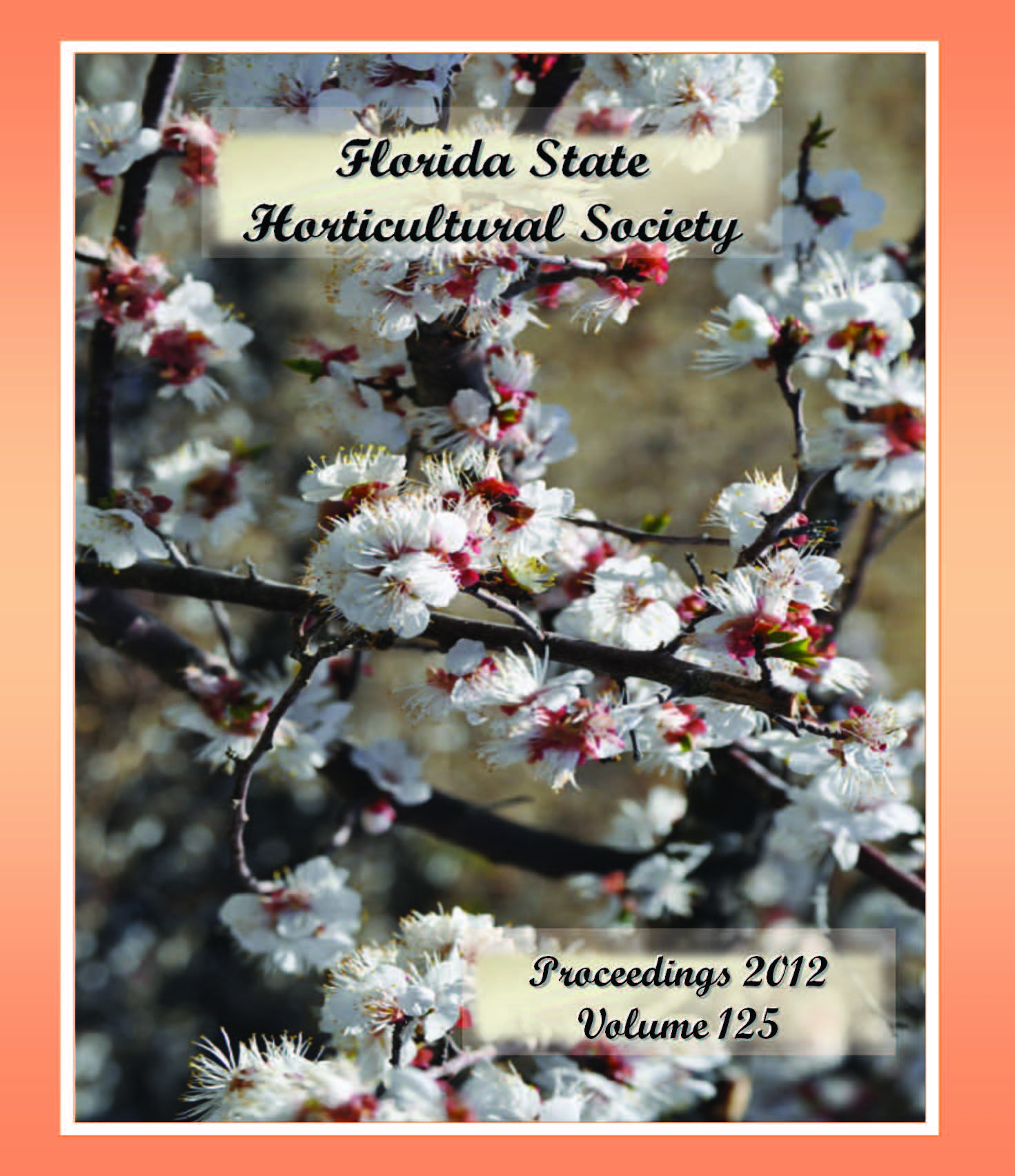Under Severe HLB and Citrus Canker Pressure, ‘Triumph’ and ‘Jackson’ Perform Better Than ‘Flame’ and ‘Marsh’ Grapefruit
Abstract
Huanglongbing (HLB) and Citrus Canker (CC) threaten the viability of Florida grapefruit production. ‘Triumph’ (T), reportedly a grapefruit/sweet orange hybrid, is similar to seedy white grapefruit with earlier maturity and lower bitterness. ‘Jackson’ (J) is a low-seeded budsport of ‘Triumph’. Tree health and productivity of T, J, and standard cultivars ‘Marsh’ (M) and ‘Flame’ (F) planted in a replicated field trial were assessed for 3 years, in a site with endemic HLB and CC. In each year, overall tree health (a visual integration of canopy thickness, lack of dieback, and freedom from foliage disease) of T/J was significantly greater than M/F. Severity of CC was significantly less on T/J than on M/F, while foliar HLB symptoms in the fall were similar among cultivars. Titers of Liberibacter asiaticus were assessed by PCR in Jan. 2010; there were no significant differences among cultivars in random leaf samples or most-symptomatic diagnostic samples in the 2010 analyses. M/F developed very thin canopies while T/J had normal canopy density. T/J had extensive blotchy mottle characteristic of HLB on leaves year-round while M/F trees appeared to drop severely HLB-symptomatic leaves in the winter. Cumulative numbers of fruit/tree were greater for T/J (255/220) than for M/F (29/66). Tree height of T/J was slightly greater than in M/F. Canopy volume was greater in T/J than M/F in some years, but trunk cross-sectional area (TCSA) was not different, and there were no cultivar differences in TCSA increase over the study period. Cumulative percent fruit drop was greater in M/F than T/J (F=50; M=53; T=15; J=14). Fruit quality assessments were made each cropping season. T/J fruit always met commercial maturity standards whereas M/F fruit usually did not due to low total soluble solids and low Brix/acid ratios. In 2011–2012 many M/F were small and/or misshapen while T/J fruit were of normal size and shape. These results suggest that T/J or other grapefruit-like cultivars may be viable alternatives to standard grapefruit cultivars in the presence of severe HLB and CC, with apparent tolerance to HLB in T/J. More importantly, it provides evidence that useful tolerance to HLB may exist within conventional scion genotypes.

